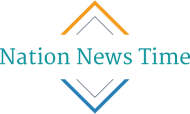
Salesforce is a powerful platform right out of the box, offering many features to streamline your business processes. However, its true potential is often unlocked through thoughtful and strategic customization. Tailoring Salesforce to your specific needs can dramatically improve user adoption, enhance efficiency, and ultimately deliver a significant return on your investment (ROI). As a seasoned Salesforce consultant, I have witnessed firsthand the transformative impact of well-executed customizations. Conversely, I have also seen the pitfalls of poorly planned modifications that can lead to complexity, technical debt, and a diminished ROI. This blog post outlines key best practices to ensure your Salesforce customization efforts drive maximum value for your organization.
Align Customizations with Clear Business Objectives
The first and most crucial step in any Salesforce customization project is a crystal-clear understanding of your business objectives. What specific challenges are you trying to solve? What improvements are you aiming to achieve? Customizations implemented without a direct link to tangible business goals will likely become costly distractions.
Consider these questions:
- Will this customization improve sales productivity by streamlining lead management or opportunity tracking?
- Will it enhance customer service efficiency by providing agents with the correct information at the right time?
- Will it automate manual processes, freeing valuable employee time for more strategic initiatives?
- Will it provide better data insights to inform decision-making?
By clearly defining the “why” behind each customization, you can prioritize efforts, measure success more effectively, and ensure that your investment directly contributes to your bottom line.
Read: Mosquito Spray Treatment: A Simple Solution for a Peaceful Night
Embrace the Power of Declarative Development First
Salesforce provides a powerful declarative tools suite that enables administrators to modify the platform through point-and-click interfaces without coding. All these tools, namely Process Builder, Workflow Rules Flow Builder, and Lightning App Builder, provide administrators the power to customize Salesforce operations for various requirements.
Why prioritize declarative development?
- Faster Implementation: Declarative changes require less time for implementation than code-based approaches due to their speedier deployment speed.
- Lower Maintenance Costs: Declarative configurations provide better maintenance affordability because they are easier to comprehend and support, thus decreasing ownership expenses over time.
- Reduced Technical Debt: Fewer custom Salesforce codes lead to an environment with decreased complexity and reduced potential compatibility issues.
- Empowering Admins: The system allows Salesforce administrators to conduct customization tasks independently instead of depending on developers to manage simple functions.
First, evaluate all declarative features of the platform to avoid writing Apex code or creating Lightning Web Components (LWCs). Definitions and point-and-click functionality can accomplish tasks that developers typically need to manage.
Design for Scalability and Future Growth
Your future business needs will require the Salesforce to remain flexible during instance changes. The addition of custom features should focus on present requirements and future growth potential throughout the entire business process.
Key considerations for scalability:
- Avoid Hardcoding: All specific data and IDs should stay out of the configurations and code since they constitute hardcoding. As an alternative to hardcoding, apply custom settings and custom metadata types together with dynamic logic solutions.
- Follow Naming Conventions: You must adopt standard naming conventions for every custom field, object flow code components, and custom fields. Implementing these standards helps Salesforce organizations become more manageable for long-term maintenance.
- Document Everything: Detailed documentation should include the reasons for customization, its functional aspects, and all dependencies. Your documentation is essential for the upcoming developers and administrators who must understand or fix your implemented work.
- Consider Governor Limits: When writing Salesforce code, users should recognize and follow governor limits to maintain efficient platform performance because data increases.
- Planning system scalability in advance eliminates future substantial maintenance costs, which ensures the best possible return on investment.
Implement Thorough Testing and Validation
Organizations that implement customizations without thorough testing create conditions that lead to system disruptions and corrupted data. An extensive testing approach must be put into practice to guarantee that your Salesforce environment stays unaffected by changes while ensuring that changes function correctly.
Best practices for testing:
- Test in Sandbox Environments: Custom alterations must be developed first in sandbox environments that duplicate your production org.
- Develop Comprehensive Test Cases: Create complete test cases for diverse scenarios with positive and negative testing situations.
- Involve End-Users in UAT (User Acceptance Testing): The UAT phase should include real-world testing sessions with end-users who will validate custom features to match their requirements and provide a pleasant user interface experience.
- Automate Testing Where Possible: To automate repetitive test tasks and maintain consistent quality standards, available automation tools should be evaluated.
Early extensive testing prevents post-implementation problems, which saves time and resources and protects business operations.
Iterate and Optimize Based on User Feedback and Data
The process of customizing Salesforce involves continuous refinement because customizations need constant improvements. After deployment of customizations, start receiving user feedback and monitoring user interaction with the system. The collected information shows optimal and suboptimal aspects that need updating and streamlining.
How to iterate and optimize:
- Gather User Feedback Regularly: User feedback should be collected regularly through surveys, feedback sessions, and reporting channels for issue notices and enhancement recommendations.
- Analyze Usage Data: Utilize Salesforce reports and dashboards to view how users operate with the custom modifications. Validation of adoption rates should occur in sections showing potential low usage and process optimization opportunities.
- Prioritize Enhancements: Urgent enhancements should be selected after users provide input, and data helps identify improvements to enhance both features and user experience.
Regular assessments of your customized elements through real-life usage enable you to refine them for continuous maximum organization value generation.
Invest in Ongoing Training and Governance
No matter how well-designed customizations are, they become useless if users cannot effectively use them. Long-term success and return on investment depend heavily on continuous training investments alongside the creation of concrete governance approaches.
Key elements of training and governance:
- Provide Comprehensive Training: User proficiency in new functionality requires initial and ongoing training provided to all customers.
- Develop Clear Documentation: The organization should maintain current documentation, which includes all system customizations and operational processes.
- Establish Governance Policies: Establishing governance policies defines procedures for customizations at all stages that maintain consistency while preventing uncontrolled changes.
- Empower Super Users: The organization should select powerful users from various departments for initial and ongoing system support roles.
When you grant user empowerment and implement systematic customization methods, your investment will generate long-term positive effects.
Conclusion
Strategic Salesforce customization, driven by clear business objectives, a focus on declarative development, scalability considerations, rigorous testing, continuous optimization, and robust training and governance, is the key to unlocking peak performance and maximizing your ROI from the Salesforce platform. By adhering to these best practices, you can transform Salesforce from a standard CRM into a powerful, tailored solution that drives tangible business value for your organization.
